October 20, 2022: CITES Recommendations, NGOs and Members of Congress Push Ballast Water Regulation, Billions of Tons of Fishing Gear Pollution, and more
October 20, 2022 – We gather news: You stay informed
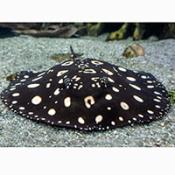
1. CITES Secretariat Releases Recommendations, Including Marine Proposals
The 19th Meeting of the Conference of the Parties (COP19) will convene in November in Panama. The Secretariat has published its final recommendations on the 52 proposals that will be presented to this year’s meeting. The recommendations for two shark proposals have been recommended by the Secretariat.
The proposals all relate to species that have been put forward for changes to the regulations that govern their international trade. In addition to the marine proposals, there are nearly 600 species under consideration including more than 200 tree species, reptiles such as crocodiles, caiman and lizards, iconic species of rhino, elephant and hippos and all species of orchids.
Thank you for your generous gift that will help us continue the production of this weekly, free publication

2. NGOs Unite with Members of Congress: Push for Ballast Water Regulation
Recently 160 public policy organizations signed a letter to President Biden regarding the regulation of ballast water. The groups urged the administration to call on the EPA to institute tougher standards for the contaminated water reentering the planet’s oceans from large ships. Despite the passage of the Clean Air Act and other legislation, the EPA has not changed their laissez-faire approach to the discharged water. Without additional modernized regulations, the ballast waters will continue to bring unwelcome invasive species to fragile ecosystems. New technology in treatment solutions can greatly minimize the ballast water’s impact. These “best available technologies” have been previously required of the EPA by the Second Circuit Court of Appeals since 2015. Signatories are asking the administration to take action, forcing the EPA to comply or face additional legal action. Editorial Comment: Sea Save Foundation was among the 160 organizations that signed the critical letter to the EPA
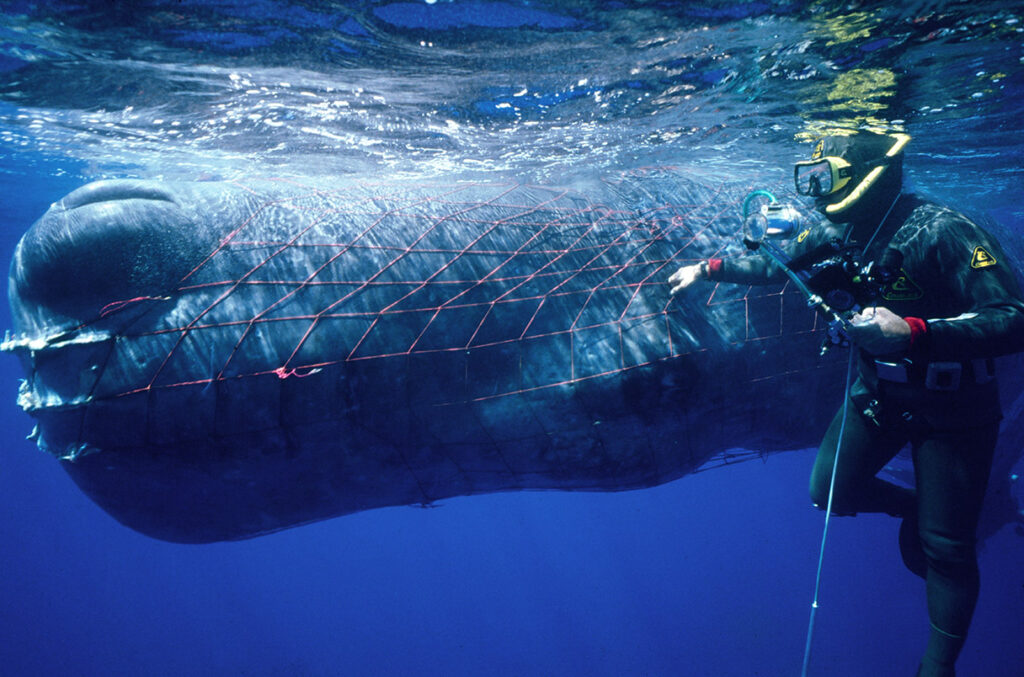
3. Billions of Tons of Fishing Gear are Polluting the Sea Every Year
Traps, nets, and other lost fishing equipment can linger in the ocean for years, entangling and killing whales, turtles, and other marine creatures. A new study, led by Kelsey Richardson, a marine and social scientist, provides the first solid global estimate of the amount of equipment lost each year. She identified five major types of fishing gear and organized surveys for 451 people who work on fishing vessels in the seven countries that extensively use this type of equipment. Her team estimated that over 13 billion hooks and 16 million kilometers of fishing line are lost from vessels each year. It was pointed out that the amount of lost gear is likely underestimated because it’s not deemed illegal fishing. Richardson hopes that the figures will be used by other researchers to quantify the risks to marine life posed by various types of gear.

4. Microplastics Found in 75% of Fish in New Zealand
New Zealand’s Ministry of Environment released a report last week stating that microplastics are found in three of every four of New Zealand’s fish, huge portions of indigenous seabirds and marine species. Microplastics were found in 90% of indigenous seabirds, 82% of indigenous shorebirds, 81% of marine invertebrate species and 22% of marine mammal species. This resulted in the above being classified as being either threatened with extinction or at risk of becoming threatened with extinction.
The Ministry notes that measures are being taken to relieve the pressure such as a ban on single-use plastic bags, and freshwater management plans.
In addition, the report’s data noted ocean acidification rose 8.6% between 1998 and 2020, overall water temperatures are rising, and marine heatwaves are becoming more frequent and severe.

5. New Study: Plastics Induce Multi-Organ Damage in Seabirds
Plastic pollution in the world’s oceans is ubiquitous and increasing. The environment is inundated with microplastics (< 1 mm), and the health effects of these less conspicuous pollutants are poorly known. In addition, there is now evidence that macroplastics can release microplastics in the form of shedding or digestive fragmentation, meaning there is potential for macroplastic exposure to induce direct and indirect pathology through microplastics. Therefore, there is an urgent need for data from wild populations on the relationship between macro- and microplastic exposure and the potential compounding pathological effects of these forms of plastics. This study investigated the presence and impact of microplastics in multiple tissues from Shearwaters, Ardenna carneipes, a species that ingests considerable quantities of plastics, and used histopathological techniques to measure physiological responses and inflammation from the plastics.
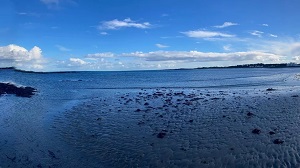
6. Irish Sea Conservationists Call to “Turn the Tide” of Inaction
Conservationists from countries surrounding the Irish Sea have formed a new alliance, the Irish Sea Network (ISN) “to turn a tide of inaction” by ensuring it is better protected in the face of multiple environmental threats.
The Irish Sea is surrounded by six different administrations (Scotland, England, Wales, Isle of Man, Northern Ireland, Republic of Ireland) each with their own policies, laws, and positions on the marine environment.
The Irish Sea is under significant and increasing pressure from climate change and the impact of fishing, aquaculture, development, shipping, aggregates, military activity, recreational activity and pollution, which is undermining habitats and accelerating species loss.
The Irish Sea Network has called for collaboration on the needs, their priorities, and locations to restore the Irish Sea to a healthy status.
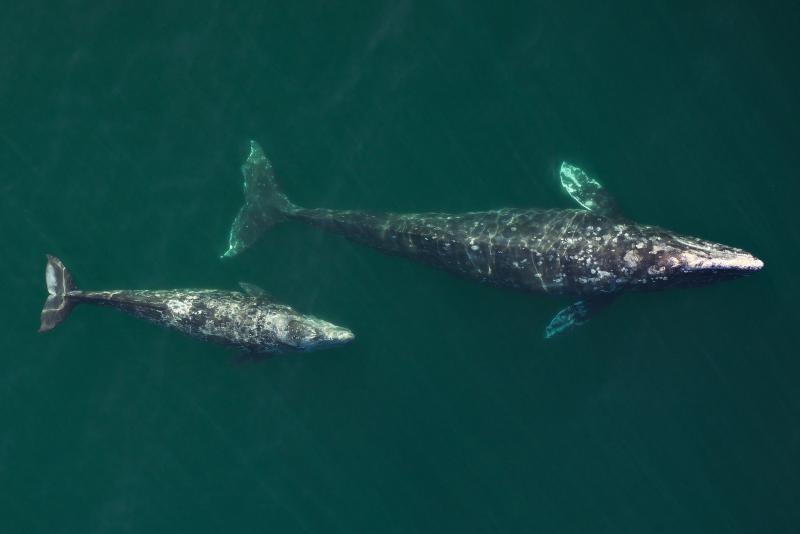
7. Marine Mammal Protection Act – Fiftieth Year Anniversary
Fifty years ago, Congress passed the Marine Mammal Protection Act (MMPA) in response to growing concerns that certain species and populations of marine mammals were in danger of extinction or had been depleted as a result of human activities. In its 50th anniversary year, we are celebrating the science and conservation successes under this historic act.
In 1972, this Act set the global benchmark for marine mammal conservation as the first piece of legislation to call specifically for an ecosystem-level approach to wildlife protection. Its primary goal continues to be to support sustainable populations of marine mammals based on the capacity of the habitat. Since it was enacted, no marine mammal species have gone extinct in U.S. waters, instead populations such as humpback whales, gray whales, gray seals, and California sea lions have recovered.

8.Mediterranean Lionfish Invasion Quelled by Early Response and Targeted Removal
RELIONMED is a four-year project seeking to stem a lionfish invasion in the Mediterranean Sea. The venomous fish has been identified as the most ecologically harmful species to be invading southern European waters, and is responsible for significant impacts on biodiversity due to its predatory behavior and rapid reproduction.
Working with the University of Cyprus, Plymouth scientists will be helping to coordinate a number of different activities, including the development and implementation of an early surveillance and detection system, and a removal response strategy.
The removal response is spear-headed by a project team that has assembled a lionfish removal response mechanism (Removal Action Teams – RATs) formed by 100 motivated diver volunteers. RATs constitute the first line of defense against the lionfish invasion with a primary objective to remove lionfish from priority areas by working alongside RELIONMED’s researchers.
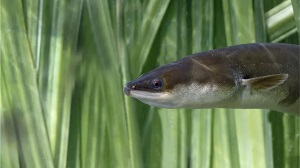
9. Ancient Mystery of European Eel Migration Unraveled
Research has shown that as an adult, the European eel undertakes the longest spawning migration of all anguillid eels, a distance of 5,000 to 10,000 km across the Atlantic Ocean to the Sargasso Sea.
A research team attached satellite tags to 26 eels from rivers in the Azores archipelago and tracked them for periods between 40 and 366 days at speeds between 3 and 12 km per day, and provided the first direct evidence of adult European eels reaching their presumed breeding place in the Sargasso Sea. Their migration speed was insufficient to reach the Sargasso Sea for the first presumed spawning period after migration commenced, prompting the hypothesis that the spawning migration period of eels may extend to more than 18 months.
Unraveling the routes taken and locating where eels spawn is critical for understanding the reasons behind their decline and to inform conservation measures.
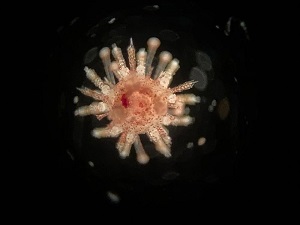
10. Invasive Seaweed in Hawai’i could be Eradicated – New Promising Research
Over the last 70 years, invasive seaweeds have inundated the northeast coast of the Hawaiian island of Oʻahu, spreading hundreds of feet or more per year and smothering the coral reefs in the Kāne‘ohe Bay. Much of the seaweed, broadly called macroalgae, was intentionally introduced in the 1970s by researchers from the University of Hawaiʻi who were experimenting with commercial cultivation of marine vegetation.
Enter, “Collector Urchins” often no larger than a baseball, these dark, rotund critters are endowed with sharp spines and tiny tube feet. They’re ideal for reef cleanup because they are ravenous for many types of algae and seagrasses. In July, scientists at the Hawaiʻi Institute of Marine Biology became the first to cryopreserve collector urchin embryos and rear them to competency. Now they may be able to cultivate these urchins in numbers large enough to consume the invasive algae.

11. Flying “Flags of Convenience” is Legal, But Can Hide Illegal Fishing
Why would a Chinese ship want to fly the Panamanian flag? This practice is known as flying a “flag of convenience” and although it’s legal, experts say it often lets shipowners benefit from lax auditing and is closely associated with illegal fishing because it can hide the identity of a vessel’s true owners. The Chinese fleet has been linked to the practice.
When a ship flies a Panamanian flag, a percentage of its crew must be Panamanian. However, compliance with this regulation is rarely verified. In fact, according to the Panama Maritime Authority, of the 318,000 crew members on ships flying Panama’s flag, just over 1,000 are Panamanian.
The European Union determined that “Panama does not exercise an adequate control over its vessels.” Contrary to the FAO’s International Plan of Action to Prevent, Deter and Eliminate Illegal, Unreported and Unregulated Fishing. Further investigation is ongoing.
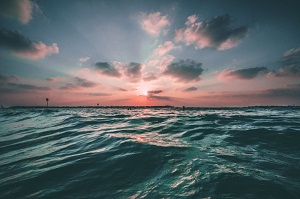
12. New International Center has Ocean Health Focus
Headquartered in Atlanta, the UN endorsed Ocean Visions is a new international center partnered with the Georgia Aquarium and Georgia Tech. The primary focus of the center is to help co-design, develop, test, fund and deliver scalable and equitable ocean-based solutions to reduce the effects of climate change and build climate-resilient marine ecosystems and coastal communities.
“This new Center will give us a framework to build the innovation ecosystem we desperately need,” said Emanuele Di Lorenzo, Ph.D., chairman and co-founder of Ocean Visions.
The Ocean Visions – UN Decade Collaborative Center will work with an emerging global network of experts and collaborators associated with projects and programs to design, test and deploy viable solutions.
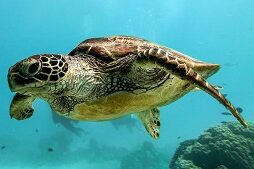
13. Once Endangered, Aldabra’s Green Turtles are Now Thriving
Around 12,000 turtles were hunted each year in the Seychelles archipelago, particularly an isolated place called Aldabra Atoll causing Aldabra’s green turtle population to plummet to critically low levels. As a result, a public trust called the Seychelles Islands Foundation took over the management of Aldabra in 1979 and in collaboration with Dr. Jeanne Mortimer, a turtle scientist, set up a rigorous turtle-track monitoring program to track the turtles’ recovery. It is not always easy to determine whether animal conservation efforts have been successful. Still, compared to early 1968 estimates, green turtle nests have increased by 410% to 665%, from around 2,500 to around 15,000 nests per year by 2019 – an estimated 2.6% annual growth rate in nest numbers. Similar reports were received from green turtle populations in Australia, Costa Rica, Hawaii, Mexico, and Ascension Island, highlighting the importance of protecting nesting areas for recovery.

14. Priority of Tourism over Conservation in Indonesia
A new report outlined the current landscape of MPA management in Indonesia; the government committed to securing 10% of the country’s territorial waters for biodiversity protection and sustainable use by the end of this decade and tripling the size by 2045. However, the main priority seems to be tourism, and researchers stated that while fisheries and tourism must also be included in MPA management for economic benefits, the activities, such as blast and cyanide fishing and mass tourism, place pressure on the marine ecosystem. They urged the government to implement a strategy to lessen the effects of large numbers of tourists exceeding MPA’s carrying capacity. Scientists from around the world supported Indonesia’s commitment but noted in a recent report that marine protected areas must protect natural resources, provide long-term benefits to local people, and use safe and proper tools.
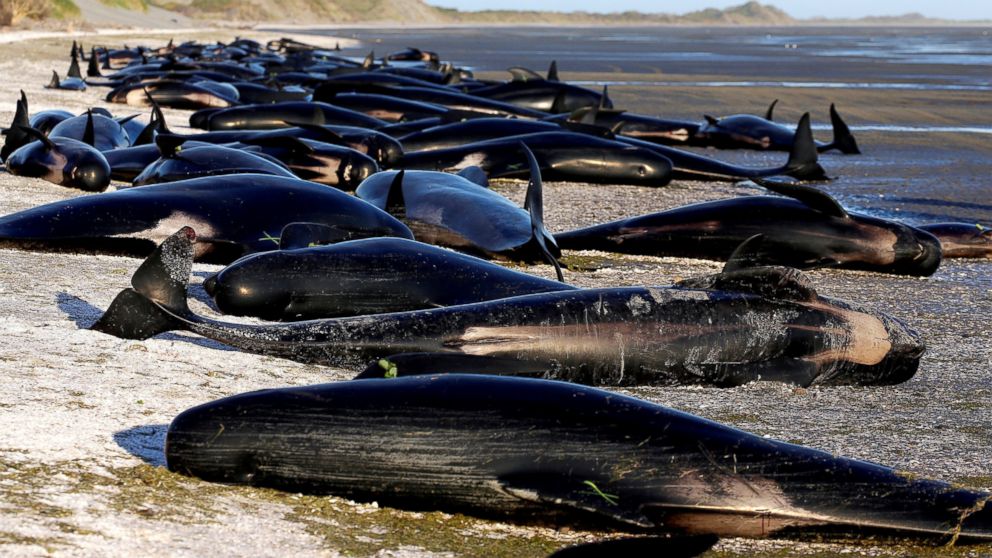
15. Chatham Islands Stranding Leaves 400 Whales Dead
The Chatham Islands archipelago, which includes Pitt Island and Chatham Island, is located approximately 840 kilometers (521.95 miles) off the east coast of New Zealand’s South Island. Because of the archipelago’s location near the meeting point of the subtropical and subantarctic oceans, there was an abundance of sea life in the area, attracting whales. On Tuesday, New Zealand’s conservation office announced that all 240 pilot whales stranded on the remote Pitt Island had died, just days after 215 whales died on a beach on nearby Chatham Island. Due to the risk of shark attacks on both humans and whales, the conservation department did not attempt to refloat whales in the area. “This decision is never taken lightly, but in cases like this it is the kindest option,” Dave Lundquist from the Department of Conservation said. The exact cause of the whale stranding is still unknown.

16. October Roundup of Positive Environmental Impacts
A London think tank found that an increase in alternative fuel use prevented a possible 4% rise in fossil fuels; the equivalent of taking more than 49 million gasoline cars off the road for a year.
Taiwan is transforming unused metro stations into underground vertical farms.
Dutch flower growers are cutting costs by using cow poop instead of buying gas.
Chile’s Atacama Desert is the sunniest and driest place on earth, but rare flowers have recently bloomed. It has prompted the Chilean government to name this region as its 44th national park.
An Indian factory is recycling cigarette butts into stuffing for soft toys. Now annually they are able to recycle millions of cigarette butts.
The world’s first commercial nuclear fusion reactor will be up and running by 2040, the UK government pledged. This could theoretically provide near-limitless clean energy.

17. World’s First Comprehensive Ecosystem Classification
A global multidisciplinary team of scientists led by UNSW Sydney researchers has created the world’s first comprehensive classification of ecosystems across lands, rivers, wetlands, and seas. The ecosystem typology will allow for a more coordinated and effective conservation of biodiversity, which is critical for human well-being. It will enable us to comprehend broad global patterns, such as man-made ecosystem transformation. Humans have created and maintained 10% of ecosystems, but they occupy more than 30% of the Earth’s land surface; what remains is home to 94% of threatened species on the IUCN Red List. On a broader level, the overview can help governments and non-governmental organizations (NGOs) working in a variety of countries make decisions about how to maximize conservation benefits from ecosystem protection and restoration efforts, and where development infrastructure should be placed to have the least impact.
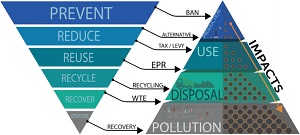
18. Study Reveals Impact of Plastic Management Techniques
The ecological and societal impacts of plastics production, use, and waste are a complex global challenge. Management strategies to mitigate the impacts of plastics, such as recycling, waste-to-energy, and replacement with alternative materials have impacts of their own. Achieving long-term sustainability of plastics use therefore requires considering the externalized impacts of such management strategies.
In a review conducted by Arizona State University, authors reviewed impacts of bans, levies, and taxes; alternative products; recycling; waste-to-energy; plastic recovery; and extended producer responsibility. Analysis identified a total of 259 measured impacts of plastic waste mitigation strategies, from 113 papers. Ninety-three impacts were negative, 104 were positive, 11 were neutral, and 51 depended on the context of implementation. Consideration of the impacts of both plastic materials and management strategies is necessary to find the best efforts.
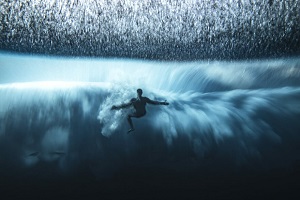
19. Underwater Surfer Shot Hooks First Place in Ocean Photographer of the Year 2022
The ocean has long been an intriguing place for many people to explore, but its creatures are considerably more fascinating than its waters. There is so much unexplored life in the water. Although we know a lot more about life on land, our understanding of marine life is still very limited even to this day.
The Ocean Photographer of the Year award winners were announced in September 2022. According to the official website, the award serves as a celebration and awareness of our planet’s oceans and will donate 20% of the profit generated in the contest to the preservation of the oceans.
The award brings together amateurs and professionals to celebrate the importance of marine life. Throughout all categories, there were nine winners in total.




